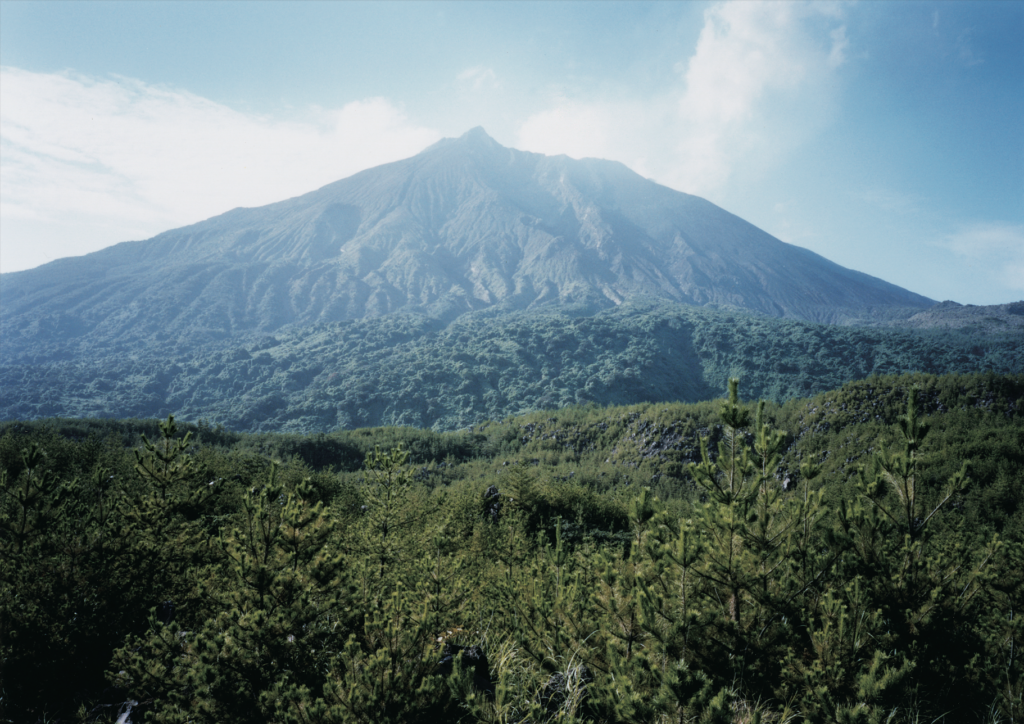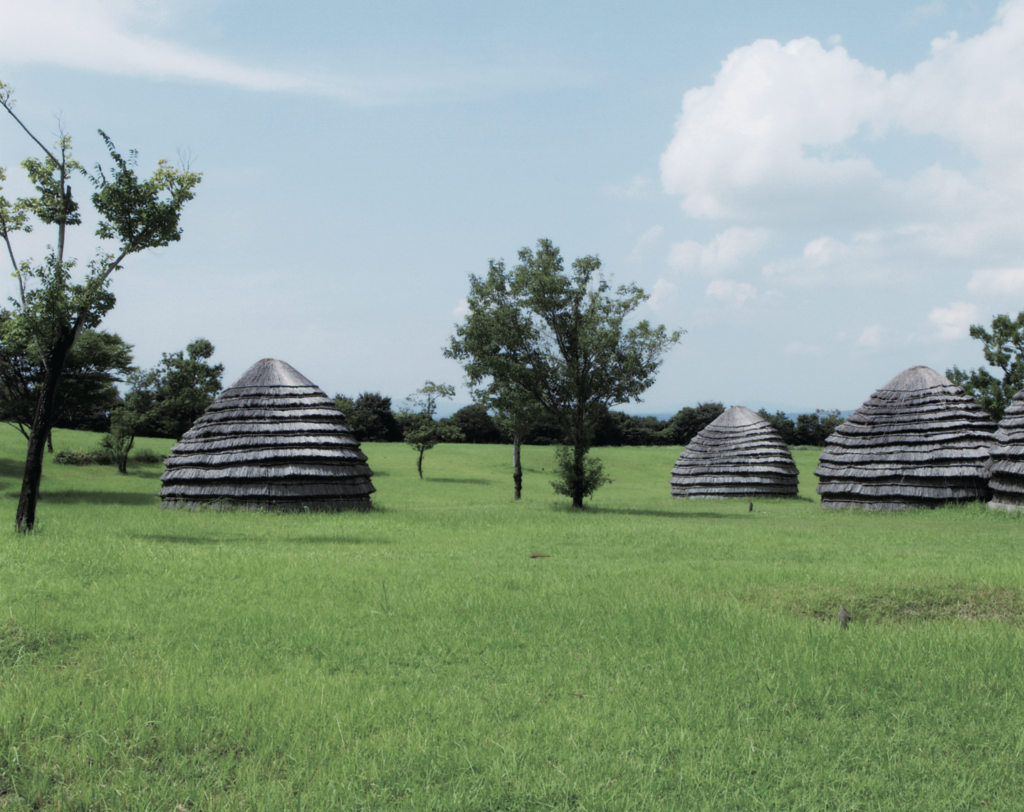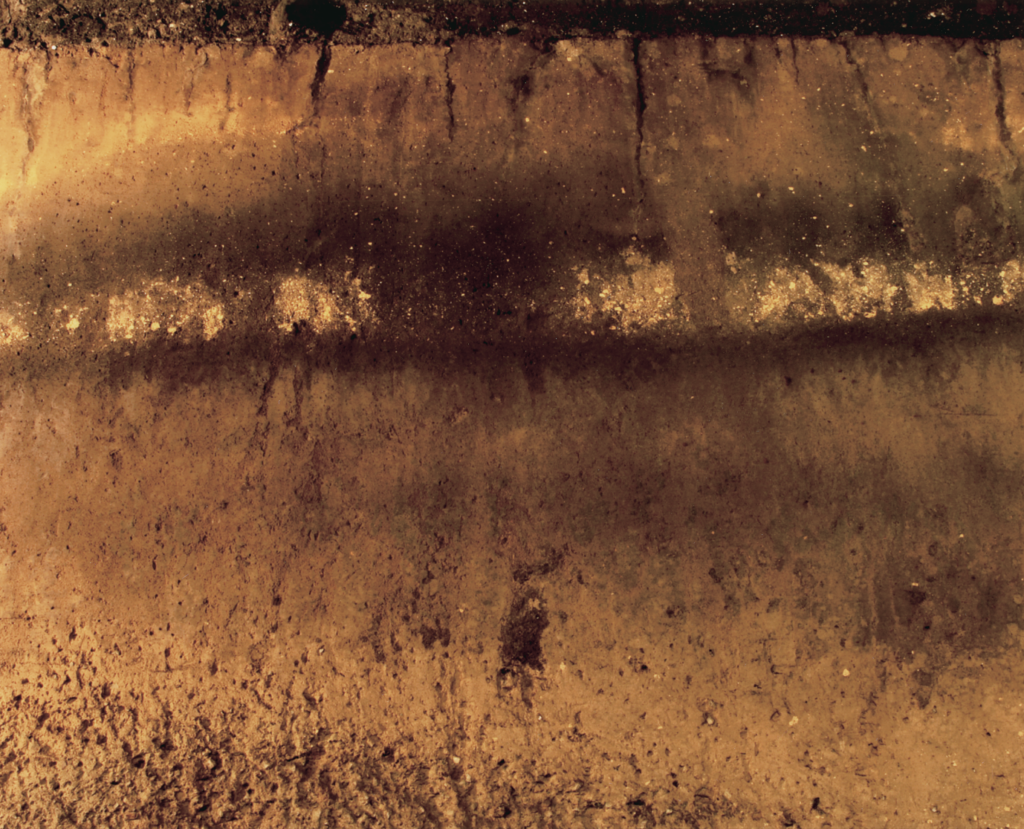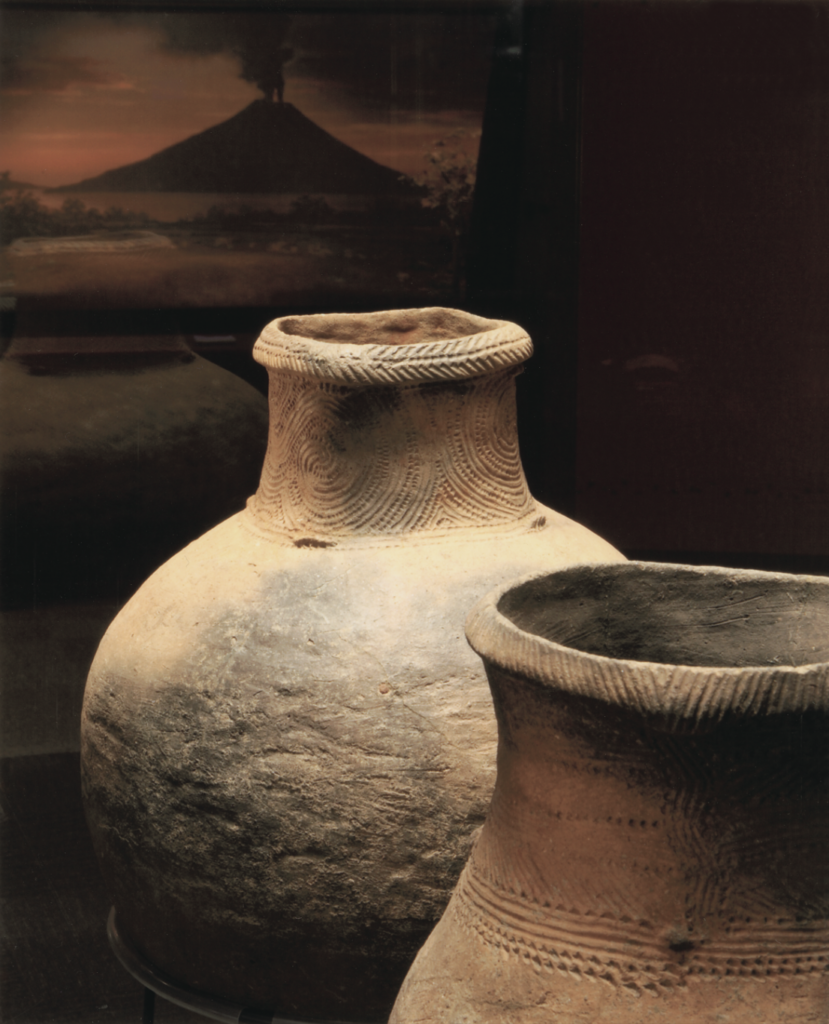9,500-year-old Settlement Revealed by Volcanic Ash
History says that early modern humans, with characteristics similar to those of us walking on the Earth today, began emerging around the world when the last glacial period ended 10–20,000 years ago. Among them were the Jomon people who lived on the Japanese archipelago. Just as I was dreaming of standing on the soil where it all started, I learned that a dwelling site from the oldest known settlement, dating back 9,500 years, had been discovered in Minamikyushu area, and flew to Kagoshima Prefecture.
Kagoshima reminds me of a picture hanging on the wall behind the favorite chair of my grandfather, who lived next to us in my childhood. It was a picture of Mt. Sakurajima spewing fumes. Upon arriving at Kagoshima-Chuo Station, I spotted a layer of volcanic ash by the road, although volcanic activity has been relatively mild recently. Gazing at the sea to my right, I headed toward the archaeological site in the Kokubu district of Kirishima City.

The settlement in question was found on the pyroclastic Shirasu Plateau, at an elevation of 250 meters, overlooking Kagoshima Bay. To the south across the bay was Mt. Sakurajima, formerly an island and now joined by land with the Osumi Peninsula. To the north was the volcanic Kirishima massif containing the sacred Mt. Takachiho.
This place was surrounded by active volcanoes that have erupted time and again from time immemorial. By looking at a map, one can’t help wondering why anyone would want to settle here. Then again, what if the Jomon people had already developed a sense of admiration and awe for volcanic eruptions and fire fountains? What if they didn’t see fire as a source of fear and intimidation, as we today imagine they did? They may have identified explosive energy with an expression of vitality and worshipped it as they would the beams of light delivered by the Sun rising from the pitch black sea in the early morning.

I let my imagination run wild as I arrived at the Uenohara site enclosed in a forest and dotted with reconstructed dwellings resembling halved “bags” of the bagworm moth. A walk through the site suggested the Jomon people obtained food from the woods and water sources nearby, and made a living not only by hunting and gathering but also by fishing.
Also nearby was a gallery displaying real strata of volcanic ash. Having practically dived into the underground building, I felt like a mole embraced by the cool air. Up close, the layers of ash displayed different colors and grains. Interestingly, this was the key to accurately dating the settlement’s formation.

Many things in nature act as clocks without hands, like a tree’s growth rings, and here, the strata had sealed in tens of thousands of years and quietly continued to keep time. The highest ground of the plateau made of accumulated volcanic ash produced undamaged clay pots dating back some 7,500 years. Two pots were lined side by side, one with a round opening and the other with a square opening (collection of the Kagoshima Prefectural Archaeological Operations Center). Others had patterns possibly created by shell impression that suggest this region developed its own unique culture that was completely different from eastern Japan.
I returned to the high ground overlooking Mt. Sakurajima and became convinced that at some point, the foundation was laid for fire festivals in southern Japan, too. I pictured a ritual to pacify the soul of the Earth, where the people spent the night gazing up at the fire they made themselves and praying to the smoke rising to the heavens. The buried pots may have held the memory of that poetic eve.
<PAPERSKY no.40(2012)>

Jomon Fieldwork | Nao Tsuda × Lucas B.B. Interview
A conversation between ‘Jomon Fieldwork’ Photographer and writer Nao Tsuda and Papersky’s Editor-in-chief Lucas B.B. The two discuss the ways Jomon culture continues to play an important role in modern day Japan. The video was filmed at Papersky’s office in Shibuya in conjunction with Tsuda’s exhibition “Eyes of the Lake and Mother Mountain Plate” held at the Yatsugatake Museum in Nagano.
Nao Tsuda | Photographer
Through his world travels he has been pointing his lens both into the ancient past and towards the future to translate the story of people and their natural world.
tsudanao.com











